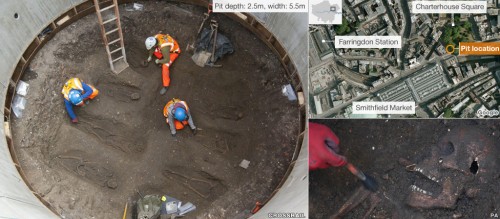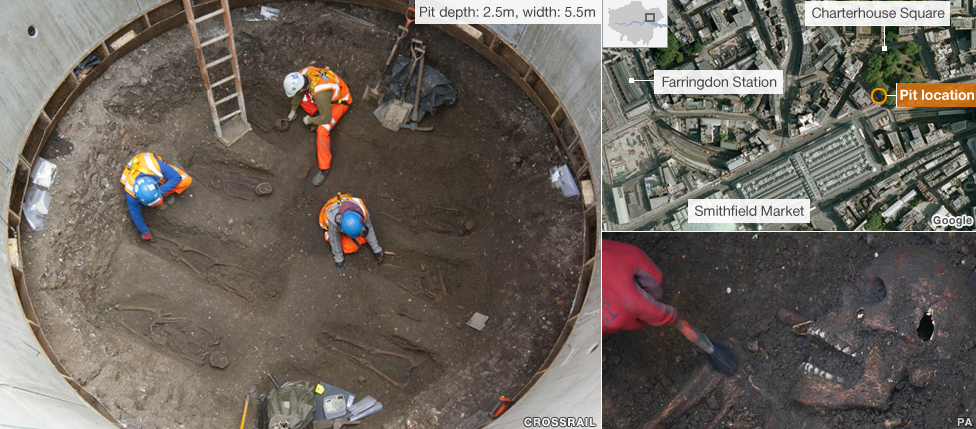
London’s Crossrail project came to a screeching halt (well, maybe not) when the workers accidentally unearthed thirteen bodies of what could potentially be the Black Plague’s earliest victims.
The location has been hidden from the public, but it’s known that the grave was found outside of London. Given the location and well placed graves, archeologists believe that this find dates back to one of the earliest eras of the plague. DNA analysis could potentially help us understand a little better how this plague manage to wipe out most of the civilization at the time.
Excavations for London’s Crossrail project have unearthed bodies believed to date from the time of the Black Death.
A burial ground was known to be in an area outside the City of London, but its exact location remained a mystery.
Thirteen bodies have been found so far in the 5.5m-wide shaft at the edge of Charterhouse Square, alongside pottery dated to the mid-14th Century.
Analysis will shed light on the plague and the Londoners of the day.
DNA taken from the skeletons may also help chart the development and spread of the bacterium that caused the plague that became known as the Black Death.
Charterhouse Square lies in an area that was once outside the walls of London, referred to at the time as “No-man’s Land”.
The skeletons’ arrangement in two neat rows suggests they date from the earliest era of the Black Death, before it fully developed into the pandemic that in later years saw bodies dumped haphazardly into mass graves
–Source: BBC news
2 comments




